Causes of Foundation Problems
The Dallas-Fort Worth area offers unique landscapes, beautiful and vibrant, but over the long run, they can disastrous on the foundation of your biggest investment, your home. If you're having foundation issues, here are some of the reasons why...
Drainage Solutions
Maintaining the proper drainage around a home is a tricky and important part of foundation maintenance. It's a good idea to keep a positive slope away from the structure approximately 5% for a distance of 5 feet, where possible so that excess water will flow away from the foundation. Soil levels against a slab foundation should be approximately two to three inches below the brick line, and about halfway up on a pier and beam. A swale or gently sloping channel is normally included between structures to avoid erosion. While not absolutely necessary, gutters and properly dispersed downspouts can help control moisture problems. The use of downspout extension and splash-blocks, or underground piping to reduce erosion to direct the excess water to flow away, are highly recommended.
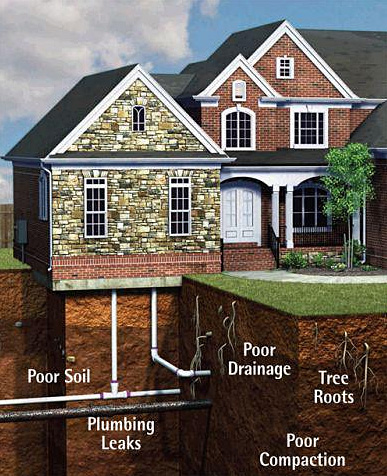
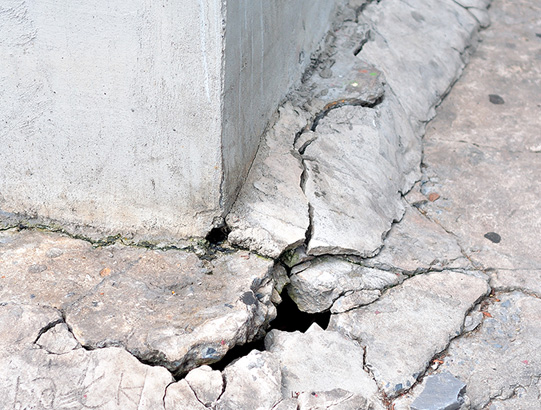
Mudjacking
Mudjacking is a process where concrete slabs are lifted and/or moved using a complex hydraulic system. Small holes are drilled in the surface of the slab through which a slurry is pumped into the area below the slab foundation. This slurry can be pumped in to fill any voids that have developed under the concrete slab, leveling out the foundation and preventing further settlement. The semi-liquid, which is under pressure, can also be used to lift sagging sections of concrete that may require leveling to their original position. Mudjacking cost can vary depending on the amount and number of slab sections needed for leveling. After lifting, the small holes are patched with concrete.
Pier & Beam Repair - Construction Issues
Most homes built before the 1960s were built on cedar post piers, extending only a few inches into the ground, providing very little surface area to support the home's foundation. The surface area over time can erode below the posts, losing both its integrity and ability to support the structure.
Block and pad piers are often used for the same function as cedar post piers, and face many of the same foundation problems. At each pier location a shallow pad of concrete is poured directly on top of the ground. Concrete blocks are then placed upon the pad and stacked to provide support under the home's beams. In many instances, the footing poured directly on top of the ground is adversely affected by the expansion and contraction of the soil at the surface level resulting in an inability to provide the proper amount of support for the structure, resulting in sheetrock cracks and stucco repair.
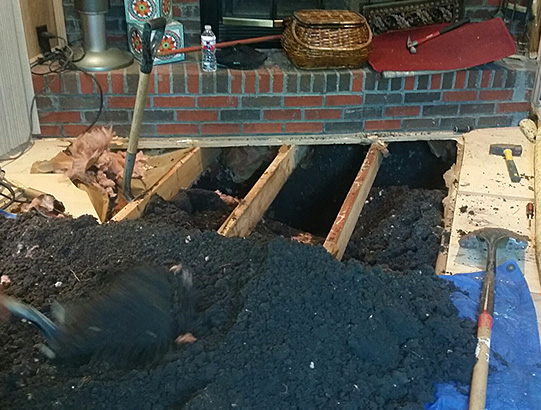
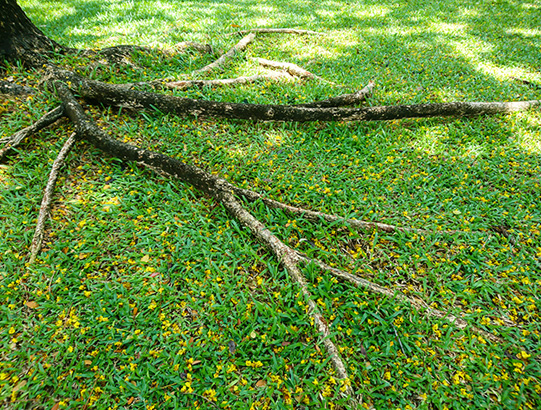
Root Barriers
Root Barriers are made to encourage the tree roots to grow downward instead of horizontally and upward to prevent foundation damage. Root Barriers act as an underground wall that blocks tree roots from penetrating the nearby streets, sidewalks, and foundations.
Slab Repair - Soil
The soils in North Texas are characterized by highly active clays, which act like a sponge, expanding greatly when wet and then shrinking when dry. This cycle of expansion over time can cause lateral and differential movement underneath your home, placing undue stress on your foundation. Slab foundations are especially susceptible to damage from soil expansion. The best long-term solution is to keep the soil around your foundation moist, which prevents shrinkage and movement along the foundation. Plumbing leaks also must be considered as that can add to unevenness in the soil moisture. Cracks in pavement can be repaired with concrete crack filler.
Landscaping
Overgrown vegetation can affect soil conditions under a foundation in negative ways. Large bushes and trees planted to close to the building can cause the soil to dry out and shrink. This condition is magnified during dry conditions, which force the roots to consume moisture and to extend further under a structure for their own survival. Large trees, such as Weeping Willows, Cottonwoods, or Oaks can pull hundreds of gallons of water a day from under a foundation. These trees should not be planted any closer to a building than the distance of their mature drip line, or safer yet, their mature height. However, if trees do exist in close proximity to the foundation, there are effective measures which can be taken to minimize the effects of moisture consumption. Tree pruning, root barriers, or even tree removal may be necessary.
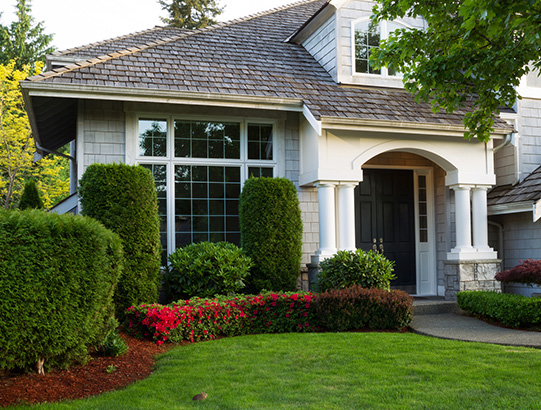
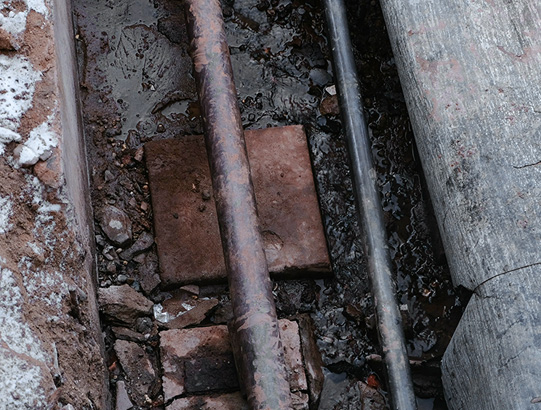
Plumbing Leaks
A slab on grade foundation acts as a barrier by resisting evaporation and by shielding the under-slab soil from rainfall, maintaining a nice equilibrium. When a plumbing leak occurs under the slab the equilibrium is disturbed. The added moisture from a leak can cause expansion in the soil, putting pressure on the foundation. If signs of movement are present, tests on the home's sewer systems and water supply should be performed. Sometimes, sump pump drainage and excavation is necessary.
